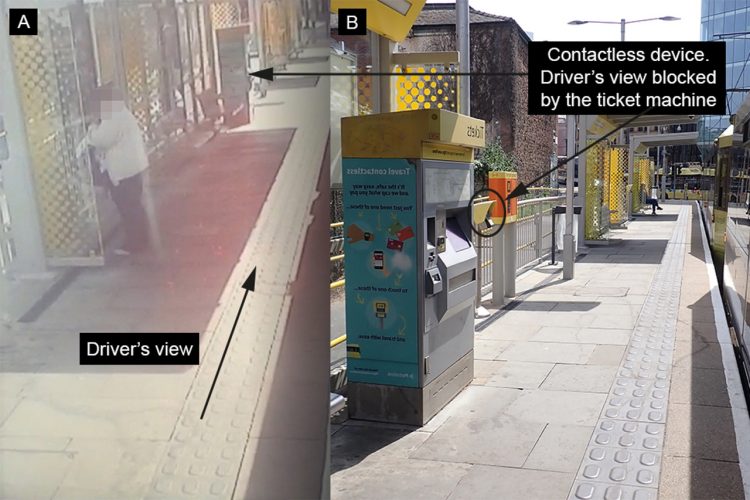An incident which occurred on the Manchester Metrolink around 11:17 on 27th May 2022 has been reviewed by The Rail Accident Investigation Branch.
A passenger on the tram became trapped in the doors departing from Shudehill where they were dragged by the tram and subsequently fell onto the platform and sustained face injuries.
They used the contactless ‘touch in' device on the platform, while they were standing by this device the tram driver began the trams door closure sequence.
The evidence which the Rail Accident Investigation Branch has is that the passenger used the ‘touch in' device and moved towards the tram.
When the passenger realised that the doors were closing they stepped back from the tram, however their bag became stuck in the closed doors. The passengers hand was stuck in the bag, meaning that they were unable to free themselves from the bag.
From here, since the tram driver had a green light for the doors being closed, the tram began to move out of the stop resulting in the passenger being dragged for 13 metres before they managed to free themselves.
The driver was focused ahead and was not aware of the incident until they were advised by their employer, Keolis Amey Metrolink (KAM).
The cause of the accident was due to the driver not completing the full safety checks before setting off. The Keolis Amey Metrolink rulebook states that drivers must make three checks of a platform using the CCTV on board before departing the platform.
While the trams are fitted with a door interlock system which confirms when all doors are locked, any item less than 30mm thick can still be caught, hence the importance of the three checks through CCTV.
This interlock system was checked after the incident and was confirmed to be working correctly.
It is confirmed that the driver checked the CCTV the first time, where at this point the passenger would have been hidden by the ticket machine.

After the first check, there is no evidence of the other two checks and the driver stated that they assumed that given the green door lock it was safe to depart. The passenger bag handle was less that 30mm thick to was not detected by the system. If the driver had completed the further two mandatory checks, there is a high chance that the driver would have been able to prevent the incident.
These checks became more important after a previous incident in 2017, where a pushchair got dragged in Nottingham. Since that incident, the Rail Accident Investigation Branch advised that more measures were taken to prevent such incidents through multiple checks and that sole reliance on the interlock system should not occur.
The driver likely did not understand fully that thinner objects could be trapped and didn't understand the importance of the multiple checks before departure.
The important safety message that has been put out is that it is crucial to complete full visual checks to get confirmation of nothing being trapped in the doors before departure.
Alongside the need for operators to implement appropriate assurance processes to verify that safety briefings have been correctly understood and that they are being acted upon.
A wider summary of the incident can be found on the RAIB's website.
There seems to be a problem with door edge technology. This should ensure that the doors will throw back by any touch, however light … even the finger of a child. I travelled daily on the London underground during the 1970’s. People would regularly ‘run the doors’ which would then throw back immediately on contact. Why not now?
As a former LT train crew I can say that none of the rolling stock I worked on in the 80s – most of which dated from 1938 onwards was fitted with such a system. The doors reopening would have been a reaction of the guard ( remember them?) by reopening.